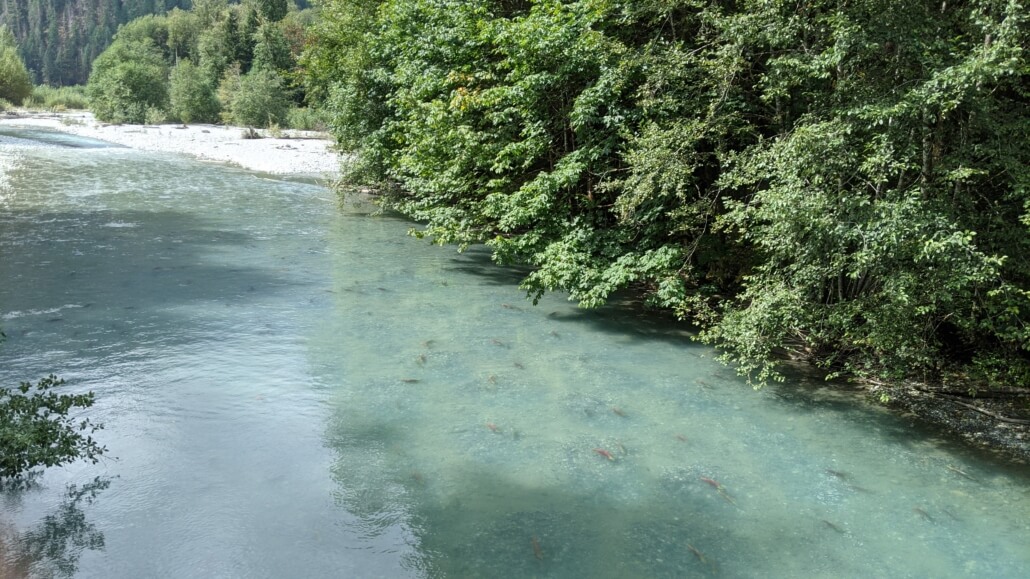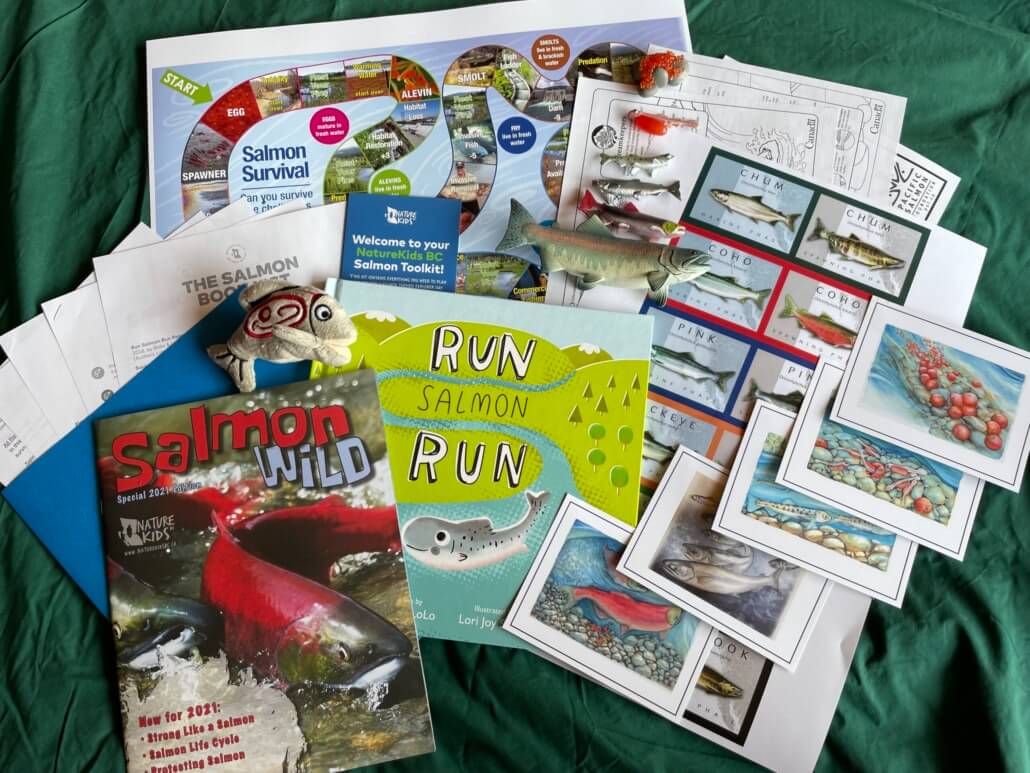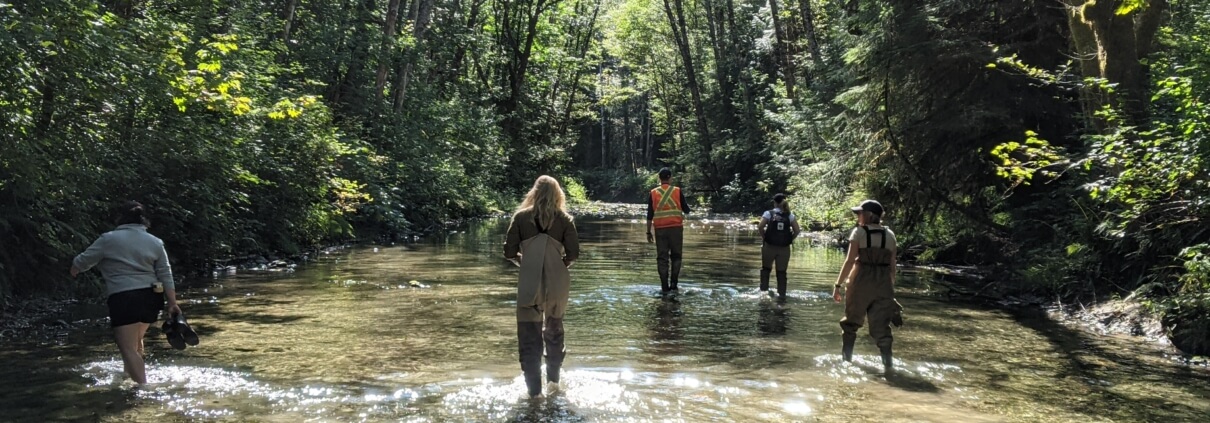Community Salmon Program accepting applications until Oct. 15
The Pacific Salmon Foundation (PSF) is accepting applications to the Community Salmon Program from Sept. 1, 2022 through Oct. 15, 2022.
The Community Salmon Program (CSP), launched in 1989, empowers volunteers, local streamkeepers, Indigenous communities, and schools to take action to conserve and rehabilitate Pacific salmon and their habitats. Successful projects have included salmon habitat restoration efforts, aquatic monitoring and research, stock assessment, emergency flood initiatives, salmon enhancement, educational programming and outreach, and citizen science.
CSP accepts new applications each spring and fall. It is primarily supported by the federal Salmon Conservation Stamp, a decal which anglers purchase with their fishing licence. Proceeds from the $6.24 stamp generate nearly $1.5 million annually for community grants through PSF. All generated proceeds support PSF’s salmon restoration, stewardship, education, and enhancement efforts.
Apply to the Community Salmon Program.
CSP success stories can be found throughout B.C. and the Yukon with local efforts making a difference for salmon. See below for two examples.
Kw’atset te sthe’qi – Corbold Creek South Floodplain Restoration

Sockeye returning to Corbold Creek in Sept. 2021. (Photo: Tracy Green)
Many sockeye salmon populations run in abundance every four years, and 2022 is a dominant year for sockeye returning to B.C. rivers, meaning impressive return numbers are expected.
Corbold Creek is one of the major remaining spawning areas for sockeye salmon in the Upper Pitt River watershed. Many salmon populations in the watershed are struggling, some facing record-breaking low return numbers. Upper Pitt sockeye, for example, recently had the lowest returns in 40 years.
Habitat availability is a major limiting factor to salmon productivity in the region. For years, Katzie First Nation and the Lower Fraser Fisheries Alliance (LFFA) have led continued efforts to improve habitat quality for sockeye, Chinook and coho salmon in the Upper Pitt watershed. Last year, the groups created a new 9,924-square-metre Sθqəy spawning channel designed to effectively double the available spawning habitat. This year, with continued support from PSF, the partners are connecting the new channel to the Alvin Patterson Sockeye Spawning Channel, to be used by an estimated 6,000 spawners. This habitat was designed primarily for sockeye, but may also be used by Chinook, pink, and coho salmon, as well as steelhead and cutthroat.
The name of the project “Kw’aatset te sthe’qi” from the Lower Fraser Salish Halkomelem dialect, means “Look at the Sockeye Salmon” a hope that future generations will see these special fish returning in abundance.
It was essential to complete this phase of the project this year, given the big sockeye run.
“The timeliness of this is critical,” says LFFA fisheries biologist Ian Hamilton. “For any chance at recovering and improving productivity, we need to take advantage of the big cycle years… If we missed this window we’d be waiting four years for the next opportunity, which we weren’t willing to risk.”
Sockeye typically return to the spawning beds by early September. Stream monitoring and spawner counts will be implemented to assess effectiveness.
A New Salmon Toolkit for Elementary School Educators

In 2021, NatureKids BC developed a Salmon Toolkit, which provides educators with tools and resources to teach kids about salmon and their importance in B.C. ecosystems.
The toolkit, developed with support from PSF, intends to foster the next generation of salmon supporters through engaging educational resources about the life cycle of Pacific salmon, the different species of salmon in the Pacific Northwest, fun facts, and more.
The learning materials in the kit are all re-usable and appropriate for kids aged five to 12. The toolkit is aimed at educators across B.C. who want to help kids develop an appreciation for wild Pacific salmon.
For the 2022-2023 school year, NatureKids BC will widely distribute digital and hard copies of the toolkit through classrooms, home learner networks, and community groups across B.C. Learn more about the toolkit here.
Donations to the Community Salmon Program can be made online. The Community Salmon Program also benefits from the generosity of donors, with thanks to: Trans Mountain, Mosaic Forest Management, BC Hydro, Methanex, Seaspan, Paper Excellence, Secure Energy, Neptune Terminals, ENCORP PACIFIC, Sutherland Foundation Inc., and Pembina Pipeline. Interested businesses and individuals can contact salmon@psf.ca



